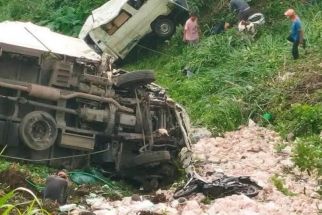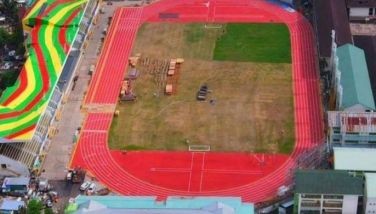Negros loses P469 M in land taxes due to CARP
July 11, 2006 | 12:00am
The demand for an intensive review of the Comprehensive Agrarian From Program (CARP) hit a sore point yesterday as various local government units had reportedly lost P469 million in land taxes from agrarian reform beneficiaries.
This was according to La Castellana Mayor Enrico Elumba who sent me a copy of his study of collectibles on assessed land values, which he prepared after his town suffered tremendous tax losses on real property due to CARP.
Elumba studied the data on assessed value of lands by the Provincial Assessor’s Office which showed that the total collectible from CARP areas reached P469,877,430.96. Of this amount, only P6,994,562.14 had been collected or a collection efficiency of only 1.49 percent.
According to Elumba, the study covered an eight-year period from 1996 to 2004. Of the province’s 237,580 agricultural lands, 57,305.4 hectares are covered by CARP.
Most local government units, Elumba noted, had complained that the tax deficiency has caused severe handicaps in their delivery of basic social services, especially in the field of education.
"Almost all of the LGUs are highly dependent on real property taxes," Elumba pointed out. In La Castellana’s case, for example, of the P46,693,250.88 due in land taxes last year, only P1,683,664.85 had been collected.
"This is just too much," Elumba stressed, pointing out that real property tax is the "lifeblood" of every LGU.
Of every P200 paid in real property taxes, P100 goes to the provincial government (provincial school board). The rest are divided by the barangay council, P25; the provincial government, P35, and the municipality, P40.
The local government share, Mayor Elumba disclosed, is spent for the local school board, government vehicles, and other operational expenses of local government units.
"That is why I am advocating for the review of CARP because I think if it is successful in Luzon, it is not suited in the Visayas and Mindanao," the La Castellana Mayor explained.
The major decrease in collection of land taxes, Elumba added, has affected education, peace and order, and expenditures for social services by the towns and cities.
The CARP beneficiaries, Elumba explained, lacked technical and financial capability to manage the land, resulting in instances where they sell their rights to their lands or mortgage their property.
A recent study by the University of Asia and the Pacific, showed that about 70 percent of beneficiaries no longer till their land.
Negros Occidental Gov. Joseph Maranon was joined recently by several groups of laborers and landowners in calling on President Arroyo to order a comprehensive review of the implementation of the CARP in the province.
There is also a growing agitation for the Land Bank of the Philippines to come up with a detailed report on how much agrarian reform beneficiaries have paid so far on their land amortization. So far, the LDP has yet to release this data despite repeated calls from various sectors, including this writer for the report.
For the time being, the clamor is to suspend land acquisition by DAR pending the outcome of the review. DAR Regional Director Alexis Arsenal had agreed on the comprehensive review call during the recently concluded Regional Development Council meeting in Iloilo recently.
Roxas City recently won the first prize in the cities category of the Regional Development Council government projects contest for Western Visayas.
But it turns out that the project had suffered a major setback. This did not, however, fazed Roxas (Capiz) officials led by Mayor Antonio del Rosario.
Yes, he intends to go ahead with the Diwal Festival on July 14 and 15, despite the estimated loss of some P10 to P13 million of income due to the damage on the sanctuary of the angel wings in Punta Cogon.
RDC chair Antique Gov. Sally Zaldivar-Perez last week announced Roxas City’s Diwal revival project as the winner in the RDC government projects contest. But the project had encountered heavy losses purportedly due to illegal fishing and trawling.
Del Rosario said though that they still have to harvest the Diwal and push through with the city’s seafood festival.
Indiscriminate fishing had reportedly depleted severely the angel wing sanctuary in Cogon.
Instead, Del Rosario said the harvest area will be in Barangay Barra. The festival will be held at the city’s public plaza.
It was in 1994 when Roxas City declared a moratorium on the gathering of Diwal to avert further depletion.
That same year, the Institute of Agriculture, College of Fisheries of the University of the Philippines-Visayas in Iloilo established the Diwal sanctuaries to regenerate Diwal’s dwindling population.
That paved the way for the revival of Diwal industry in Roxas City. The sweet, juicy bivalve soon flourished again. Iloilo City’s posh restaurants and eateries started serving again the luscious food which some gourmets consider as possessing aphrodisiac qualities.
This time, with the damage to the Diwal sanctuary in Punta Cogon the harvest will only be limited to three tons instead of the expected record harvest of 100 tons.
The Roxas mayor blamed trawl fishers and typhoon "Caloy" as well as lapses by the Bantay Dagat for the losses.
Del Rosario said the harvest will be on July 14. The next day will be planting day.
In short, this is just a temporary setback that will not defer the Diwal Festival.
This was according to La Castellana Mayor Enrico Elumba who sent me a copy of his study of collectibles on assessed land values, which he prepared after his town suffered tremendous tax losses on real property due to CARP.
Elumba studied the data on assessed value of lands by the Provincial Assessor’s Office which showed that the total collectible from CARP areas reached P469,877,430.96. Of this amount, only P6,994,562.14 had been collected or a collection efficiency of only 1.49 percent.
According to Elumba, the study covered an eight-year period from 1996 to 2004. Of the province’s 237,580 agricultural lands, 57,305.4 hectares are covered by CARP.
Most local government units, Elumba noted, had complained that the tax deficiency has caused severe handicaps in their delivery of basic social services, especially in the field of education.
"Almost all of the LGUs are highly dependent on real property taxes," Elumba pointed out. In La Castellana’s case, for example, of the P46,693,250.88 due in land taxes last year, only P1,683,664.85 had been collected.
"This is just too much," Elumba stressed, pointing out that real property tax is the "lifeblood" of every LGU.
Of every P200 paid in real property taxes, P100 goes to the provincial government (provincial school board). The rest are divided by the barangay council, P25; the provincial government, P35, and the municipality, P40.
The local government share, Mayor Elumba disclosed, is spent for the local school board, government vehicles, and other operational expenses of local government units.
"That is why I am advocating for the review of CARP because I think if it is successful in Luzon, it is not suited in the Visayas and Mindanao," the La Castellana Mayor explained.
The CARP beneficiaries, Elumba explained, lacked technical and financial capability to manage the land, resulting in instances where they sell their rights to their lands or mortgage their property.
A recent study by the University of Asia and the Pacific, showed that about 70 percent of beneficiaries no longer till their land.
Negros Occidental Gov. Joseph Maranon was joined recently by several groups of laborers and landowners in calling on President Arroyo to order a comprehensive review of the implementation of the CARP in the province.
There is also a growing agitation for the Land Bank of the Philippines to come up with a detailed report on how much agrarian reform beneficiaries have paid so far on their land amortization. So far, the LDP has yet to release this data despite repeated calls from various sectors, including this writer for the report.
For the time being, the clamor is to suspend land acquisition by DAR pending the outcome of the review. DAR Regional Director Alexis Arsenal had agreed on the comprehensive review call during the recently concluded Regional Development Council meeting in Iloilo recently.
But it turns out that the project had suffered a major setback. This did not, however, fazed Roxas (Capiz) officials led by Mayor Antonio del Rosario.
Yes, he intends to go ahead with the Diwal Festival on July 14 and 15, despite the estimated loss of some P10 to P13 million of income due to the damage on the sanctuary of the angel wings in Punta Cogon.
RDC chair Antique Gov. Sally Zaldivar-Perez last week announced Roxas City’s Diwal revival project as the winner in the RDC government projects contest. But the project had encountered heavy losses purportedly due to illegal fishing and trawling.
Del Rosario said though that they still have to harvest the Diwal and push through with the city’s seafood festival.
Indiscriminate fishing had reportedly depleted severely the angel wing sanctuary in Cogon.
Instead, Del Rosario said the harvest area will be in Barangay Barra. The festival will be held at the city’s public plaza.
It was in 1994 when Roxas City declared a moratorium on the gathering of Diwal to avert further depletion.
That same year, the Institute of Agriculture, College of Fisheries of the University of the Philippines-Visayas in Iloilo established the Diwal sanctuaries to regenerate Diwal’s dwindling population.
That paved the way for the revival of Diwal industry in Roxas City. The sweet, juicy bivalve soon flourished again. Iloilo City’s posh restaurants and eateries started serving again the luscious food which some gourmets consider as possessing aphrodisiac qualities.
This time, with the damage to the Diwal sanctuary in Punta Cogon the harvest will only be limited to three tons instead of the expected record harvest of 100 tons.
The Roxas mayor blamed trawl fishers and typhoon "Caloy" as well as lapses by the Bantay Dagat for the losses.
Del Rosario said the harvest will be on July 14. The next day will be planting day.
In short, this is just a temporary setback that will not defer the Diwal Festival.
BrandSpace Articles
<
>
- Latest
- Trending
Trending
Latest
Trending
Latest
Recommended




























